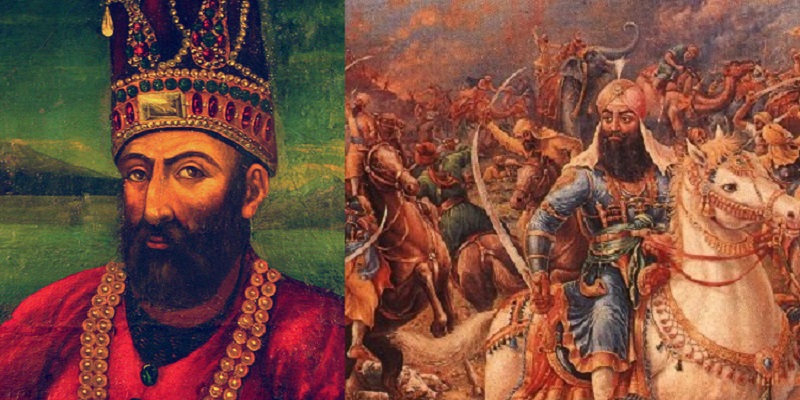Nadir Shah's Invasion of India a Pivotal Moment in Persian-Indian History
Nadir Shah's invasion of India occurred during the early 18th century, from 1739 to 1740. Nadir Shah, the founder of the Afsharid dynasty, was the ruler of Persia at the time, and he had been expanding his empire towards India for some time. The invasion marked the first time that Persia had attempted to conquer India, and it had far-reaching consequences for both countries.
Nadir Shah's invasion of India began in 1738 when he crossed the Hindu Kush mountains with an army of around 100,000 men. His goal was to conquer the Mughal Empire, which was the dominant power in India at the time. The Mughal emperor at the time was Muhammad Shah, who was unable to stop Nadir Shah's advance.
Nadir Shah's army entered India in 1739 and began to pillage and loot its way through the countryside. They captured the cities of Lahore and Delhi, and by the time they reached the latter, they had amassed a significant amount of wealth. Nadir Shah ordered his troops to sack Delhi, resulting in the deaths of tens of thousands of people and the looting of many valuable artifacts, including the famous Peacock Throne.
Nadir Shah's invasion of India had significant consequences for both Persia and India. Persia gained a large amount of wealth from the loot they acquired during the invasion, which helped fund Nadir Shah's ongoing military campaigns. However, the invasion also weakened the Mughal Empire significantly. The empire had already been in decline for some time, but Nadir Shah's invasion marked a turning point. The Mughal Empire would never recover, and it paved the way for British colonialism in India.
The invasion also had significant cultural and historical consequences. Many of the artifacts that were taken from India during the invasion were lost forever. The Peacock Throne, for example, was melted down and its jewels were scattered across the world. The invasion also led to a significant shift in the balance of power in the region, with Persia emerging as a major player.
The effects of Nadir Shah's invasion continued to be felt long after it occurred. The weakening of the Mughal Empire paved the way for British colonialism in India, which lasted until 1947. The invasion also had significant implications for Persia. While Nadir Shah's military campaigns brought wealth to the country, they also drained its resources and led to internal conflicts. Ultimately, the invasion contributed to the decline of the Afsharid dynasty and the rise of the Qajar dynasty in Persia.
In conclusion, Nadir Shah's invasion of India was a significant event in the history of both India and Persia. It marked a turning point in the decline of the Mughal Empire and paved the way for British colonialism in India. It also had significant cultural and historical consequences, with many artifacts lost forever. While the invasion brought wealth to Persia, it also had long-term implications for the country's stability and ultimately contributed to the decline of the Afsharid dynasty.

